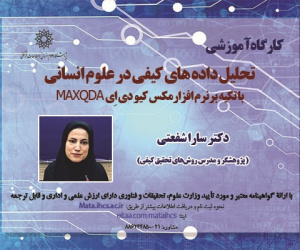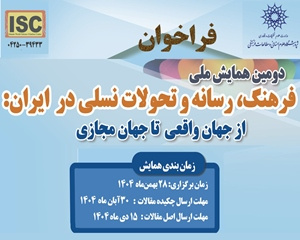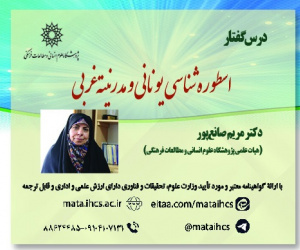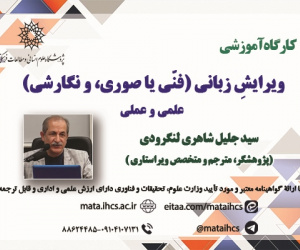ارزیابی و رتبه بندی صندوق های سرمایه گذاری در سهام با رویکرد تکنیک نوین فرصت از دست رفته بر مبنای فاصله در فضای مختصات قطبی (OPLO-POCOD) (مقاله علمی وزارت علوم)
درجه علمی: نشریه علمی (وزارت علوم)
آرشیو
چکیده
مقدمه و اهداف: امروزه در دنیای اقتصاد مدرن با توجه به رشد بازار سرمایه، اهمیت سرمایه گذاری برای مردم بیشتر شده است. از دغدغه های اصلی سرمایه گذاران در وهله اول انتخاب مناسب ترین گزینه سرمایه گذاری است. صندوق های سرمایه گذاری مشترک، نوعی سرمایه گذاری است که به جمع آوری وجوه سرمایه گذاران پرداخته تا در طیف متنوعی از اوراق بهادار سرمایه گذاری کنند و از این طریق منجر به کاهش ریسک سرمایه گذاری و افزایش بازده می شود. در حوزه تصمیم گیری سرمایه گذاری، فرآیند انتخاب مناسب ترین صندوق از میان طیف وسیعی از گزینه ها می تواند پیچیده باشد. در ادبیات تحقیق، معیارهای مختلفی برای ارزیابی عملکرد صندوق های سرمایه گذاری توسعه داده شده است. در این تحقیق مهم ترین معیارها مشخص شده و با استفاده از تکنیک نوینی در حوزه تصمیم گیری چند معیاره مورد ارزیابی و رتبه بندی قرار گرفته اند. روش ها: فرصت از دست رفته یک مفهوم اساسی در اقتصاد و مدیریت است که به معنای هزینه های ناشی از عدم انتخاب بهترین گزینه ممکن در یک موقعیت خاص می باشد. این مفهوم می تواند به عنوان پایه ای برای تعیین ارزش مرتبط با اطلاعات و تصمیم گیری های اقتصادی مورد استفاده قرار گیرد. در واقع، فرصت از دست رفته به ما کمک می کند تا درک بهتری از هزینه های واقعی انتخاب های خود داشته باشیم و به این ترتیب، تصمیمات بهتری اتخاذ کنیم. در این تحقیق، با توجه به مفروضات حل مسأله، از تکنیک جدید فرصت از دست رفته بر مبنای فاصله در فضای مختصات قطبی (OPLO-POCOD) برای ارزیابی و رتبه بندی صندوق های سرمایه گذاری استفاده شده است. این تکنیک به دلیل برخورداری از منطق قوی و علمی در تحلیل فرصت های از دست رفته، به عنوان ابزاری کارآمد در فرآیند تصمیم گیری شناخته می شود. یکی از مزایای بارز این تکنیک، قابلیت آن در انجام ارزیابی دقیق و رتبه بندی جامع از گزینه های مختلف است. با استفاده از این روش، می توان به سادگی و به طور سیستماتیک، فرصت های از دست رفته هر گزینه را سنجید و جایگاه آن ها را نسبت به بهترین وضعیت موجود مورد ارزیابی قرار داد. این ارزیابی براساس فاصله در فضای مختصات قطبی انجام می شود که به تحلیلگران این امکان را می دهد تا به صورت شهودی و کمی، نقاط قوت و ضعف هر گزینه را شناسایی کنند. به طور کلی، این تحقیق نه تنها به درک بهتر مفهوم فرصت از دست رفته کمک می کند، بلکه با ارائه یک روش نوین برای ارزیابی و رتبه بندی صندوق های سرمایه گذاری، می تواند به سرمایه گذاران و تصمیم گیرندگان در انتخاب های آگاهانه تر یاری رساند. این رویکرد می تواند به بهبود فرآیندهای تصمیم گیری در حوزه سرمایه گذاری و مدیریت مالی کمک کند و در نهایت به افزایش کارایی و اثربخشی سرمایه گذاری ها منجر شود. یافته ها: در این تحقیق با استفاده از فیلتر اندازه دارایی صندوق ها و عملکرد یک ساله، دو ساله و سه ساله و براساس اطلاعات موجود در سایت مرکز پردازش اطلاعات مالی ایران (فیپیران)، تعداد 20 صندوق سرمایه گذاری در سهام از بین انواع صندوق های سرمایه گذاری مشترک که دارای بیشترین دارایی و بهترین عملکرد هستند، انتخاب شدند. نتایج تحقیق نشان می دهد که صندوق های سرمایه گذاری گزینه 14 با مقدار 0.000841DOL=، گزینه 15 با مقدار 0.017437 =DOL و گزینه 19 با 0.03432 = DOL بالاترین رتبه بندی را داشته اند. نتیجه گیری: بر اساس این تحقیق ضمن رتبه بندی جامع گزینه ها به تحلیل جزئی تر در سه بعد ویژگی های صندوق، ویژگی های شخصیتی مدیر صندوق و معیارهای ارزیابی عملکرد صندوق پرداخته شده است. مدیران هر صندوق سرمایه گذاری، ضمن آگاه شدن از رتبه صندوق، می توانند کارآمدی و ناکارایی صندوق را در ابعاد مختلف و براساس صندوق های برتر تحلیل نمایند.Evaluation and ranking of Stock Funds using Opportunity Losses-Based Polar Coordinate Distance (OPLO-POCOD) Technique
Introduction: Today, in the modern economy, due to the growth of the capital market, the importance of investment for people has increased. One of the main concerns of investors, in the first instance, is selecting the most appropriate investment option. Mutual funds are a type of investment that gathers investors' funds to invest in a diverse range of securities, thereby reducing investment risk and increasing returns. In the field of investment decision-making, the process of selecting the most appropriate fund from a wide range of options can be complex. In the literature, various criteria have been developed to evaluate the performance of mutual funds. In this research, the most important criteria have been identified and evaluated using a new technique in the field of multi-criteria decision-making.
Methods: Opportunity loss is a fundamental concept in economics and management, referring to the costs incurred from not choosing the best possible option in a particular situation. This concept can serve as the basis for determining the value associated with information and economic decision-making. In fact, opportunity loss helps us better understand the real costs of our choices, enabling us to make more informed decisions. In this research, based on the problem-solving assumptions, a new technique called Opportunity Loss-Based Polar Coordinate Distance (OPLO-POCOD) has been used for evaluating and ranking mutual funds. Due to its strong and scientific logic in analyzing opportunity losses, this technique is recognized as an efficient tool in the decision-making process. One of the notable advantages of this technique is its ability to conduct precise evaluations and comprehensive rankings of various options. Using this method, it is possible to systematically assess the opportunity losses of each option and evaluate their positions relative to the best available condition. This evaluation is based on distance in polar coordinate space, which allows analysts to identify the strengths and weaknesses of each option both intuitively and quantitatively. Overall, this research not only contributes to a better understanding of the concept of opportunity losses but also provides a novel method for evaluating and ranking mutual funds, assisting investors and decision-makers in making more informed choices. This approach can enhance decision-making processes in the fields of investment and financial management, ultimately leading to increased efficiency and effectiveness of investments.
Results and Discussion: In this research, using the filters of fund size and one-year, two-year, and three-year performance, and based on the information available on the website of the Financial Information Processing Center of Iran (Fipiran), 20 stock funds were selected from among various mutual funds with the most assets and best performance. The research results indicate that stock funds option 14 with a DOL value of 0.000841, option 15 with a DOL value of 0.017437, and option 19 with a DOL value of 0.03432 received the highest rankings.
Conclusion: Based on this research, in addition to a comprehensive ranking of the options, a more detailed analysis has been conducted on three dimensions: the characteristics of the mutual fund, the personality characteristics of the mutual fund manager, and the performance evaluation criteria of the mutual fund. Mutual fund managers, by becoming aware of their fund's ranking, can analyze the efficiency and inefficiency of the fund across various dimensions and based on top-performing funds.







